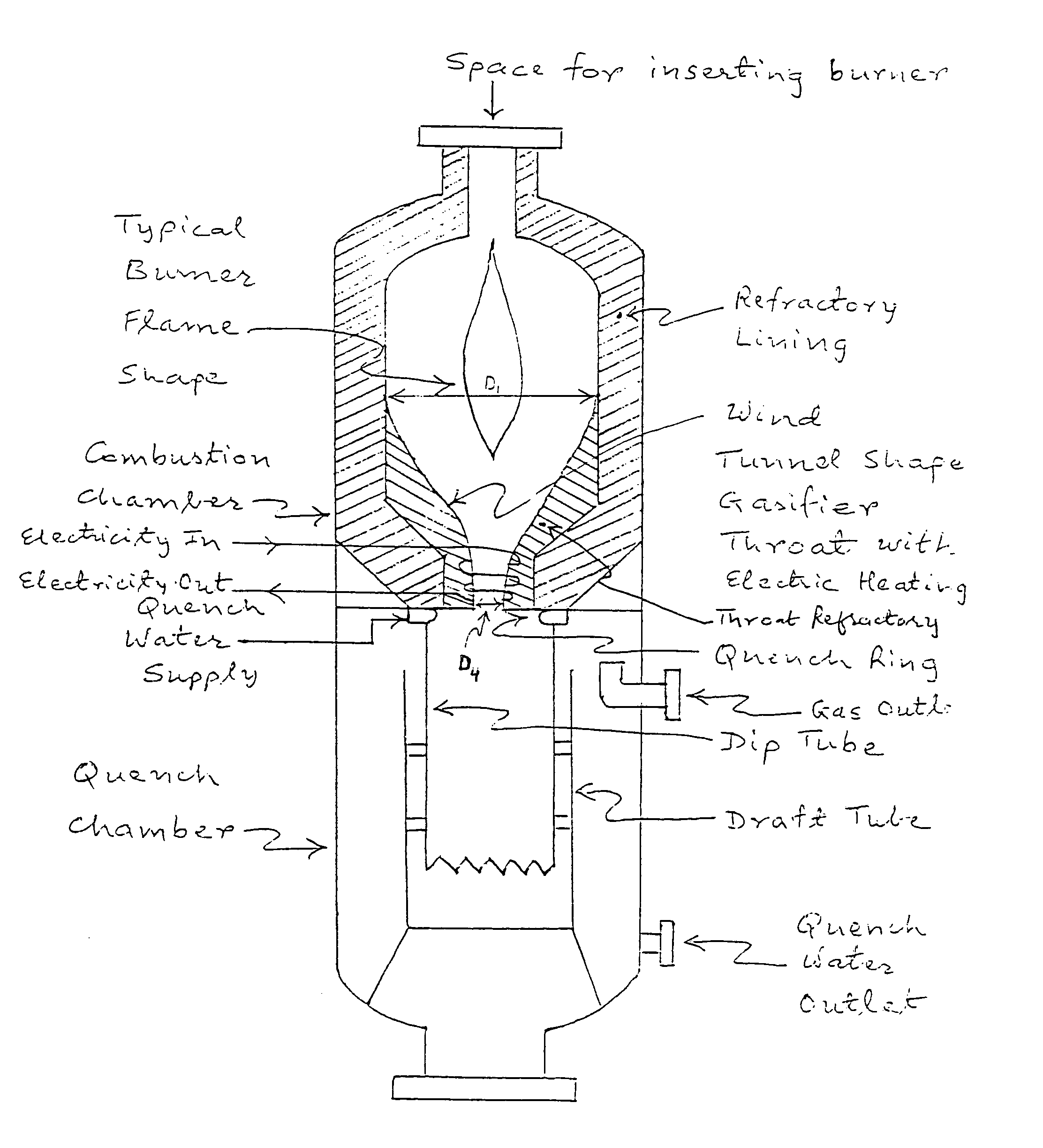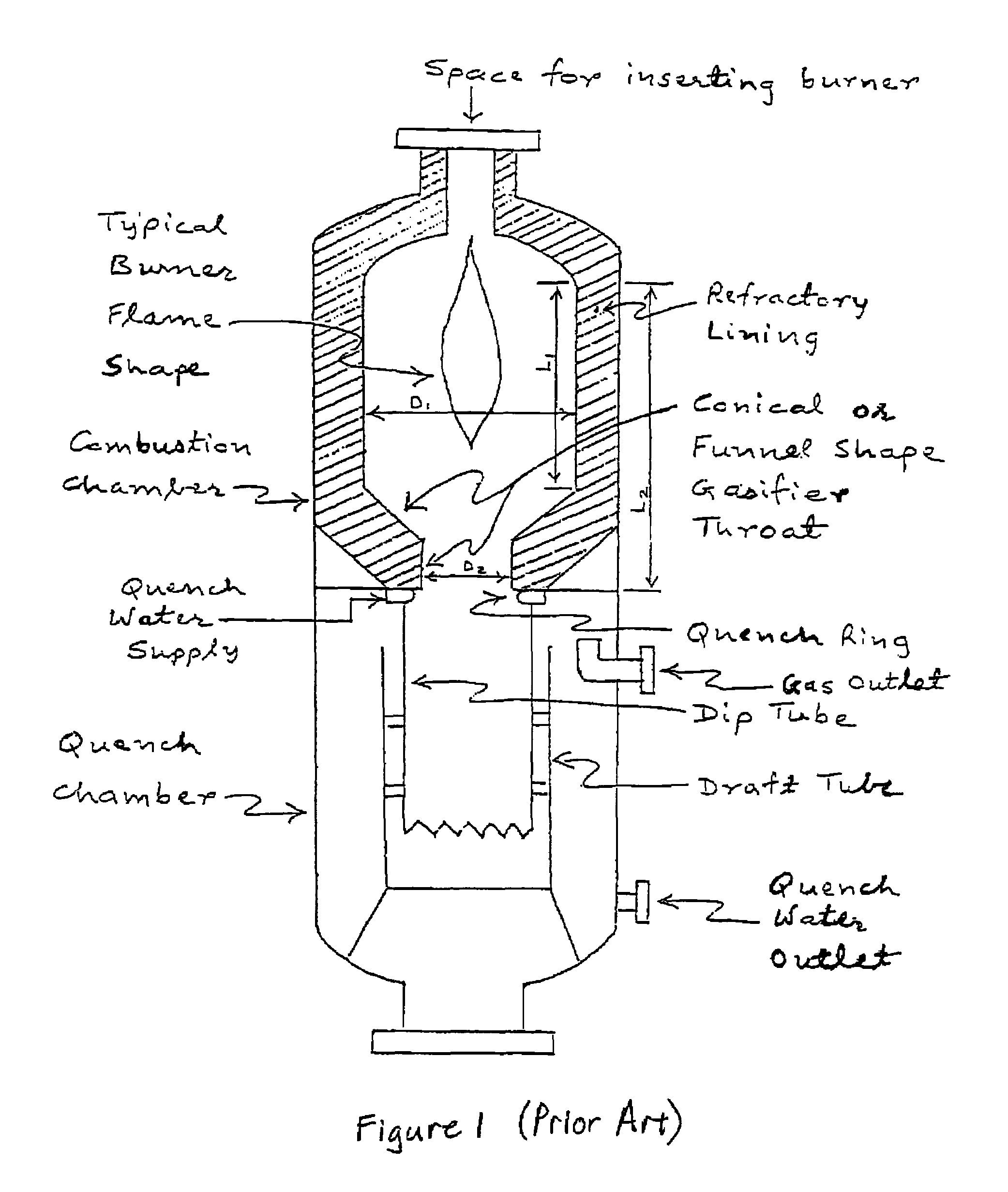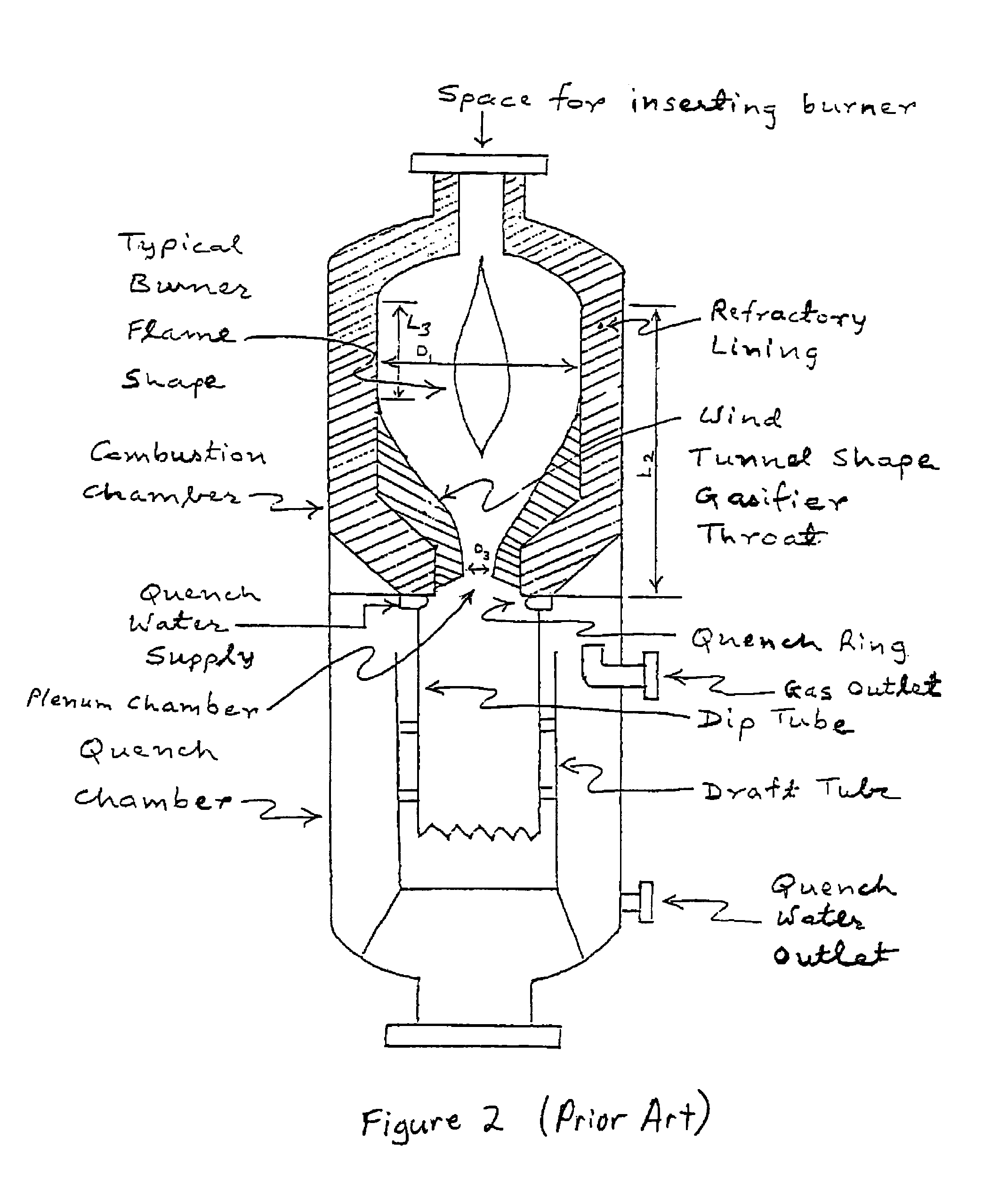Combustion chamber design for a quench gasifier
a combustion chamber and gasifier technology, applied in the direction of combustible gas production, combustible gas purification/modification, gasifier mechanical details, etc., can solve the problems of existing gasifiers, compounds also reacting to alumina type refractories, and tens to solidify, so as to improve the gasification process, increase the operating temperature of the throat area, and increase the carbon conversion
- Summary
- Abstract
- Description
- Claims
- Application Information
AI Technical Summary
Benefits of technology
Problems solved by technology
Method used
Image
Examples
Embodiment Construction
[0014]A previous patent (U.S. Pat. No. 4,574,002) suggests changing the shape of the gasifier throat to avoid ash deposits and plugs in this area. The wind tunnel shape proposed in U.S. Pat. No. 4,574,002 is shown in FIG. 2. The combustion chamber again has an external longitudinal length L2 and an internal diameter D1. However, the modified gasifier throat causes the internal longitudinal length L3 to decrease compared to the length L1 of FIG. 1. Additionally, the modified gasifier throat has an internal diameter D3. This shape provides a better chance of avoiding deposits and plugs in the throat area than the shape shown in FIG. 1. However, the wind tunnel shape is also susceptible to deposits and plugs particularly when feedstock contains metals or metal compounds that solidify at temperatures lower than 3000° F. due to the distance of the throat from the burner and its proximity to the quench ring component of the gasifier.
[0015]In order to avoid ash deposits and plugs in the th...
PUM
| Property | Measurement | Unit |
|---|---|---|
| temperature | aaaaa | aaaaa |
| temperatures | aaaaa | aaaaa |
| temperatures | aaaaa | aaaaa |
Abstract
Description
Claims
Application Information
 Login to View More
Login to View More - R&D
- Intellectual Property
- Life Sciences
- Materials
- Tech Scout
- Unparalleled Data Quality
- Higher Quality Content
- 60% Fewer Hallucinations
Browse by: Latest US Patents, China's latest patents, Technical Efficacy Thesaurus, Application Domain, Technology Topic, Popular Technical Reports.
© 2025 PatSnap. All rights reserved.Legal|Privacy policy|Modern Slavery Act Transparency Statement|Sitemap|About US| Contact US: help@patsnap.com



